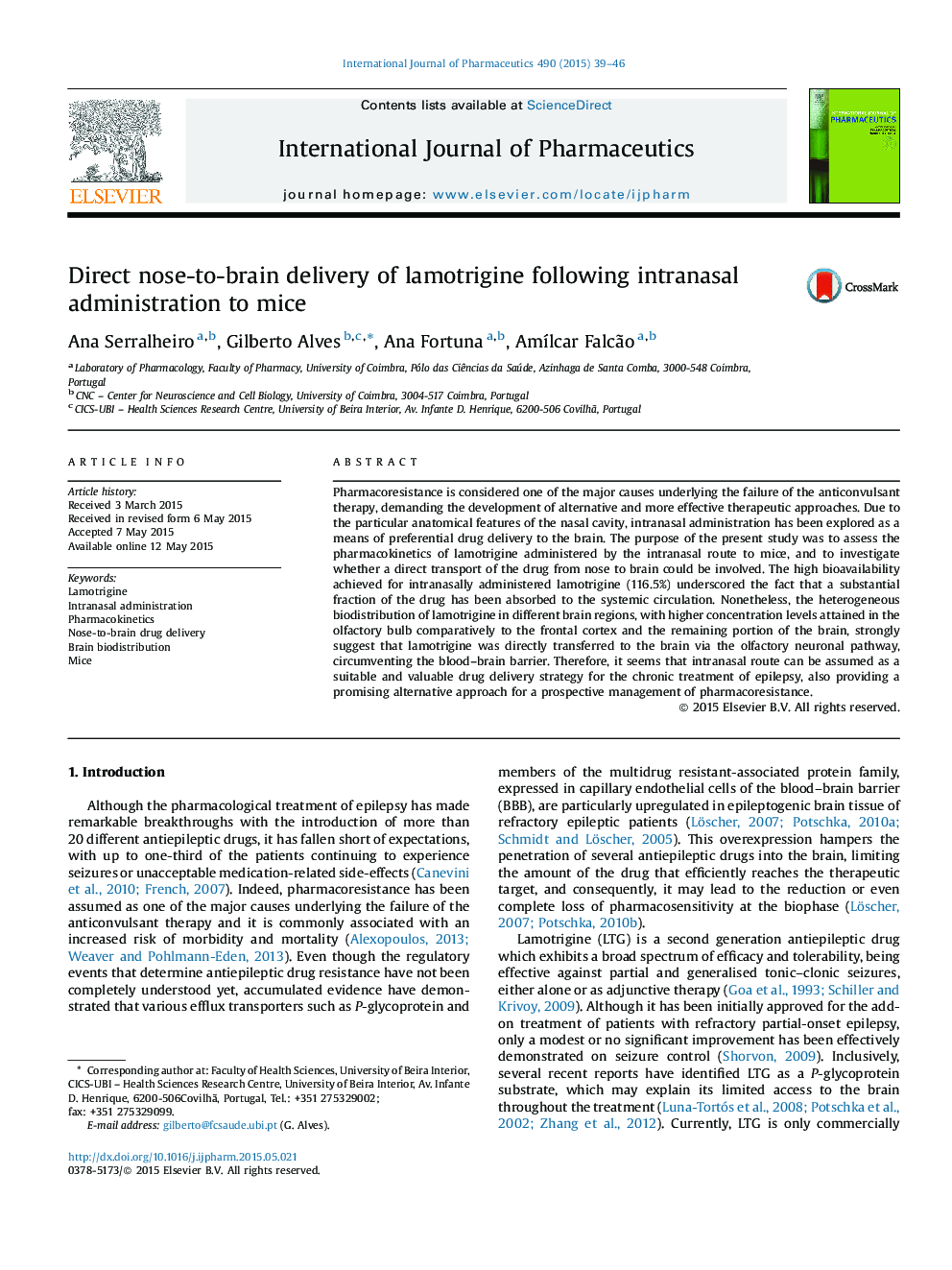| Article ID | Journal | Published Year | Pages | File Type |
|---|---|---|---|---|
| 2501297 | International Journal of Pharmaceutics | 2015 | 8 Pages |
Pharmacoresistance is considered one of the major causes underlying the failure of the anticonvulsant therapy, demanding the development of alternative and more effective therapeutic approaches. Due to the particular anatomical features of the nasal cavity, intranasal administration has been explored as a means of preferential drug delivery to the brain. The purpose of the present study was to assess the pharmacokinetics of lamotrigine administered by the intranasal route to mice, and to investigate whether a direct transport of the drug from nose to brain could be involved. The high bioavailability achieved for intranasally administered lamotrigine (116.5%) underscored the fact that a substantial fraction of the drug has been absorbed to the systemic circulation. Nonetheless, the heterogeneous biodistribution of lamotrigine in different brain regions, with higher concentration levels attained in the olfactory bulb comparatively to the frontal cortex and the remaining portion of the brain, strongly suggest that lamotrigine was directly transferred to the brain via the olfactory neuronal pathway, circumventing the blood–brain barrier. Therefore, it seems that intranasal route can be assumed as a suitable and valuable drug delivery strategy for the chronic treatment of epilepsy, also providing a promising alternative approach for a prospective management of pharmacoresistance.
Graphical abstractFigure optionsDownload full-size imageDownload high-quality image (121 K)Download as PowerPoint slide
